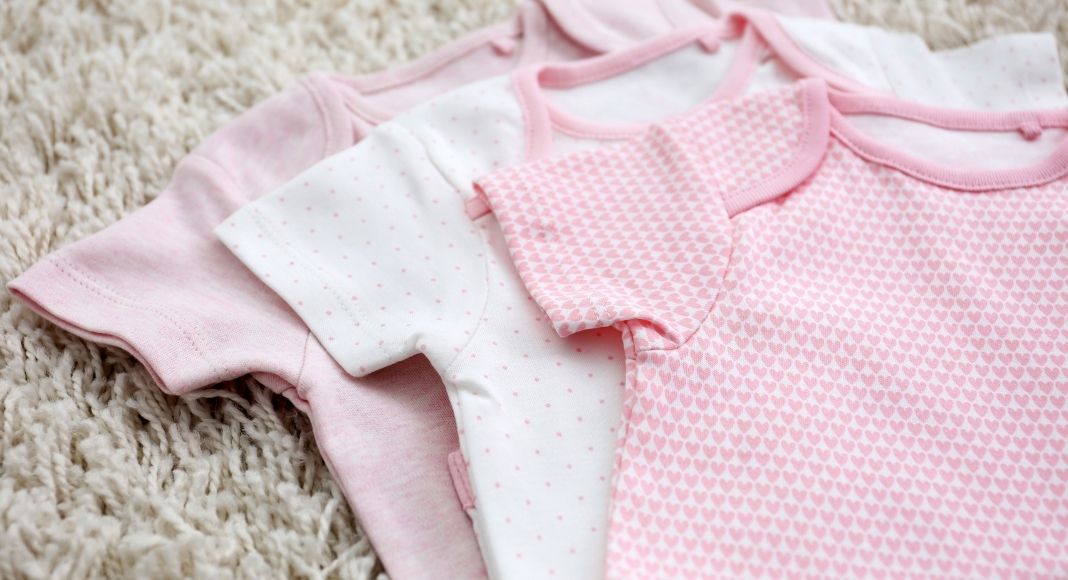 When you’re pregnant, people give you all sorts of (mostly not helpful) advice like, “Sleep when the baby sleeps!” or “Don’t hold her too much or you’ll spoil her!” or “Just wait, you’ll miss these exhausting newborn days.” But you know one thing people didn’t prepare me for? The mental energy and physical time it takes to organize baby clothing. Keeping track of sizes, rotating out things that don’t fit anymore, and having on hand what you need when a growth spurt hits … who would have thought something as tiny as baby clothes would take up so much dang time?
When you’re pregnant, people give you all sorts of (mostly not helpful) advice like, “Sleep when the baby sleeps!” or “Don’t hold her too much or you’ll spoil her!” or “Just wait, you’ll miss these exhausting newborn days.” But you know one thing people didn’t prepare me for? The mental energy and physical time it takes to organize baby clothing. Keeping track of sizes, rotating out things that don’t fit anymore, and having on hand what you need when a growth spurt hits … who would have thought something as tiny as baby clothes would take up so much dang time?
And who can really keep track of it all, especially in those first sleep-deprived months? Definitely not me. In fact, when my daughter was nine months old and needed to move up a size, I went to rotate her clothes, only to realize she had like five pairs of shorts, 20 rompers, three t-shirts, two pairs of PJs, and no shoes. What kind of wardrobe is that? And where did this stuff even come from because I certainly don’t remember buying it?
My shopping problem
To understand how I ended up in this very first-world problem, there is something you need to know about me. I come from a long line of distinguished shoppers. I would put my mother up against anyone, including Phyllis Nefler, regarding purchasing power. So I spend more time than I care to admit perusing online sales and regularly buy clothing for my daughter one or two sizes/seasons in advance when the price is right. While I enjoyed the thrill of cute clothes for an even cuter price, I found I would often forget what I had already purchased (See above: 20 rompers) and have no clue what she actually needed (See above: shoes).
Organization to the Rescue
While my shopping problem wouldn’t surprise most who know me, this little fact might … I love a good spreadsheet. Numbers aren’t really my thing (I quit math my junior year of high school and have never looked back), but organization of any kind is my jam. As The Home Edit women would say, I love a system and truly believe there’s very little in life that can’t be solved by Excel.
So when I realized I needed a better way to keep track of my daughter’s wardrobe for my own sanity, I did what I know best. I created a baby clothing organization system that involves categories, labels, and spreadsheets. And because this has been such a successful hack for me during the first two years of my daughter’s life, I thought I would share in hopes it helps another mother buried under the never-ending pile of baby clothes.
So, where do you even start?
- Step 1: Categorize clothes by size and type.
I personally took advantage of the cube storage system we have in my daughter’s closet, but really any baskets or tubs will do. Using dry-erase markers and reusable labels, I identified each bin by size and type (e.g., 2T tops, 2T bottoms, 3T tops, 3T bottoms).
This is where I stored all of her “future” clothes, which were clothes I bought (usually on sale!) for the next season/size. By doing this, her drawers and hangers were free for the clothes that fit now, taking most of the guesswork out of dressing each morning. Also, as she has moved up sizes, I knew exactly which bins to pull out, and no clothes were left behind, only to be discovered six months after they no longer fit.
- Step 2: Create a Clothing Inventory.
This is where things get really nerdy, so please stay with me. As I completed step one, I kept a tally of the sizes and quantities of different clothing categories and put them into a Google spreadsheet. This is a screenshot of the current version, but I’ve generally been doing the same thing since she was nine months old:
I used a Google sheet because it’s easily accessible on the go, but you could also use Excel or even old-fashioned pencil and paper. And, yes, you can laugh at this. My husband and friends did. But I don’t care, because guess what? It really works! Getting it down in writing allowed me to see what I already had and helped me identify what I actually needed. This not only freed up some of my mental energy of trying to keep track of this in the abstract, but it also ended up saving me time and money.
For example, on a visit to the MotherShip (aka Target), I might see they have an awesome sale on leggings. Pre-spreadsheet, I’d find myself grabbing the next size up “just in case,” only to come home to find I had more leggings than one child could ever need. That meant either taking the time to return them or eating the extra money I didn’t need to spend. Post-spreadsheet? I’ll just pull out my phone and check! If we don’t need any, that’s money I can save (or spend elsewhere in Target, let’s be real). If she does need some, I throw them in the cart and update the spreadsheet on the spot.
The clothing mental load
It may seem simple – and SUPER nerdy – but this baby clothing organization system has been more helpful than I could have imagined when I found myself in the nursery surrounded by more rompers than I could count and no shoes in sight. And while I recognize that managing the clothing of a baby or toddler may seem extremely insignificant, it is just one more thing that typically falls on both the invisible mental ticker and visible to-do list of a mother. So even though a clothing organization system for your child may feel super nerdy and overkill, I say that any hack that makes our to-do lists shorter and mental load lighter is worth it.








